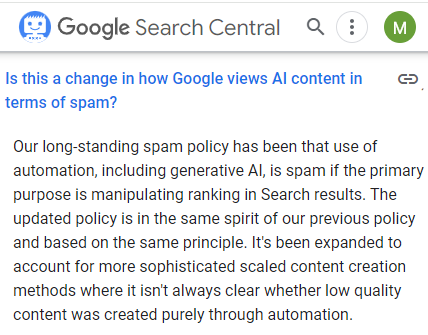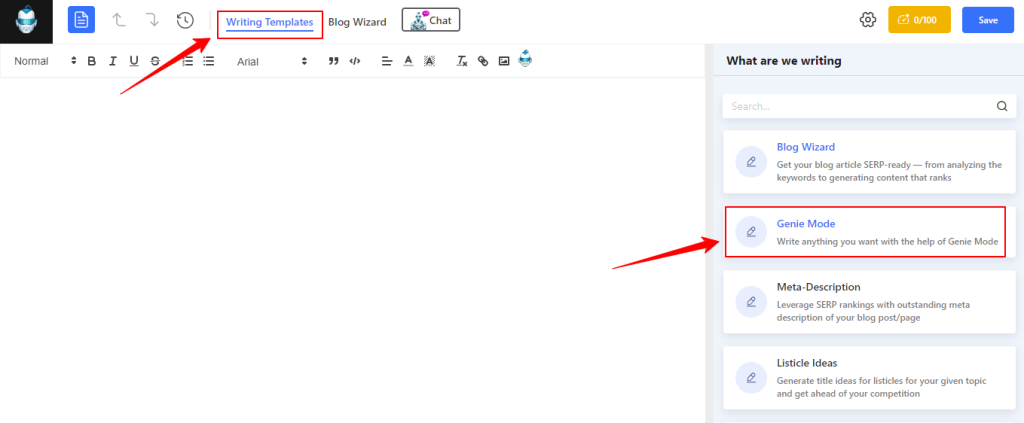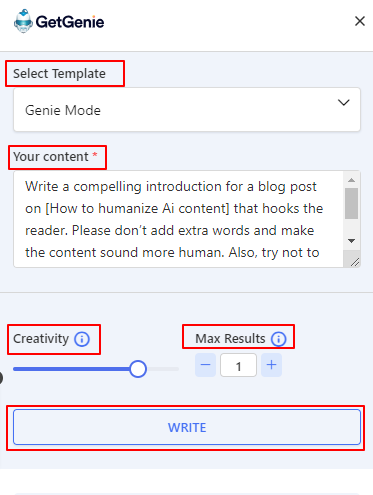Human First Approach to AI Content: Best Practices

These days, content marketers are adopting AI tools as their go-to arsenal. But, they only pay off if one has a human first approach to AI content. To make content a meaningful communication medium, you need to humanize it.
Adding strong emotional touch and current trends can help spark your content in people’s minds. For this, you don’t have to stop using your AI writing tool.
The good thing is that people’s perception of generative AI content nowadays is more positive than ever. Yes, the research claims that AI-written content with final human editing is expected to be preferred by the audience.
Below, we have discussed almost everything to take a human first approach to AI content.
What is Human First Approach to AI Content?
The concept of a human first approach to AI content emphasizes the audience’s intentions and preferences. The ultimate goal is to enhance reader engagement by being emphatic, relatable, transparent, and culturally sensitive.
Mostly, AI-produced content fails to make a human-level interaction. And, this type of content is not perfect because it often lacks human context. Thus readers find them unrealistic and get bored.
This is where human-purpose-led AI content comes in.
Rather than simply providing information, people-first content prioritizes engaging with the audience to address their aspirations and challenges interactively. More importantly, this method also eliminates any potential bias and ethical issues.
Humanizing AI Content After March 2024 Google Algorithm Updates
After Google announced its recent Core Algorithm Update of March 2024 we are seeing a huge shake-up. Lots of sites are facing a great reduction in their engagement/visitor metrics. The goal of integrating Google’s helpful content update into the core ranking system and bringing other spam policy updates is to enhance the quality of search results.
This refined ranking system will put helpful web pages forward to give a better user experience. It also means that unhelpful and unoriginal content will be pushed down the rankings or excluded from SERPs.
As per the statement of Elizabeth Tucker (Director of Google Product Management)
🎙️ Elizabeth Tucker (Director of Google Product Management)
Here, the misconception is that people are taking this update against content automation powered by artificial intelligence. But, Google has nothing to do with AI content or AI writing tools. This update aims to remove all low-quality content from the SERPs, regardless of whether it is written by humans or AI writing tools.
Here’s Google’s stand, which we can see in Google Search Central Blog:

So, it’s pretty much clear! Automating some sorts of your content creation process isn’t vulnerable. Rather, adopting a human-first approach to AI content can evolve new ways of efficient content generation. We think the importance of this practice is undermined, let’s see them.
Why Human First Approach to AI content is Important?
Enabling automation can dramatically increase content production volume. But, scaling up your content creation is one thing, and strengthening your brand voice & uniqueness is another.
Your content won’t stand out unless it resonates with your audience’s challenges and needs. That’s why humanizing content marketing is important. And, it has other benefits too.
👉 Audience Targeting & Personalization
Humanizing content helps to take a strategic approach to reach target audience groups.
You can tailor the needs of your content marketing efforts with the help of customer’s demographics, behaviors, and preferences. Having custom audience groups will maximize ROI by showing relevant content to the right people.
👉 Build Emotional Connection
A human first approach to AI content fosters a vibrant interaction with the audience. If your AI tool is trained to evoke emotions like joy, inspiration, hope, and humor in content it will trigger a lasting emotional connection.
👉 Maintaining Relevancy
AI tools often generate content that is not relevant to your purpose. Hence, your content campaign can mislead your audience with the wrong message. You should put people first when creating content with your Ai tools
After creating content with AI tools, you should edit it focusing on your target audience. This will help in maintaining brand and niche relevance.
👉 Readers-centric
Human-centered content design always prioritizes readers. It involves interactive elements and practical experience to provide practical solutions. Adding visuals and other types of content such as polls, surveys, or quizzes to AI-produced content can boost your brand awareness.
👉 Keep up with Trends
To align your content with current trends you need to monitor social media, news sources, and communities. Humanizing your AI content can give you access to areas where your potential customers are roaming. Therefore, you will be always informed about trending topics and discussions.
👉 Fewer Errors & Biases
One of the key challenges with AI content is frequent errors like plagiarism and biases. You can alleviate these issues by keeping a straightforward approach to human needs. You won’t face any penalties and can easily avoid minor issues like spelling mistakes.
What to consider for putting a human-first Approach to AI-generated content?
By now, we understand the importance of giving a human first approach to AI content. Now, we’ll show you the blueprint to infuse emotional nuances and personalization into your AI content.
Let’s get introduced to them:
➡️ Follow Prompt Chaining
One of the most recommended ways to add a human touch to your AI content is to apply prompt chaining. This technique works by splitting your prompt into multiple child prompts and applying them one after the other to generate the output.
For example, you’re using an AI platform like ChatGPT to write a blog post. In this scenario, you first need to use a prompt to generate a blog outline. Your AI tool should showcase multiple outlines and allow you to customize the outline. For best results, consider making some manual adjustments.
After that, you’ll use separate prompts for each heading. A good chance is that your blog also has a few subheadings, use the same formula for them.
In this way, instead of generating the blog with a single prompt, we follow the prompt chain process. It helps us to avoid any inaccuracies and strongly stick to the focus topic.
Follow the guidelines below for better prompt chaining:
✔️ Imagine the best possible sequence of your content.
✔️ Run the prompt in sequence.
✔️ Determine the purpose of using each prompt.
✔️ Create individual prompts for each heading.
✔️ Add relevant text, data, and other necessary input for your prompt.
Compiling the AI content with prompt chaining helps to serve the human purpose easily. You can maintain coherence of content that initiates a spontaneous flow to the reader.
➡️ Audience Pain Points
AI tools will only be able to identify your customers’ pain points if you address them in your prompts. A business is primarily based on solving specific challenges, or difficulties of customers.
These solutions are the audience’s pain points, and focusing on them will help you tailor the AI-generated random words into people-first content. Focus on the below areas to add audience pain points to your content.
✔️ Streamlined workflow for solving time-consuming tasks.
✔️ Solve budget issues with reasonable prices for services or products.
✔️ Provide information to give a higher understanding of a subject or industry.
✔️ Access to essential resources and better customer support.
✔️ Eliminating audience frustrations or emotional challenges.
✔️ Ensuring technical security and non-violation of privacy.
The audience’s pain points may differ based on the target audience. Know them and make sure your AI content covers them too.
➡️ Practical Context
AI tools are good at analyzing large amounts of data and extracting information. But, more is needed to engage readers. Audiences tend to relate more while content can craft a practical scenario before them.
Highlight the following strategies to demonstrate the real context of your content.
✔️ Give real-world examples of solving industry-related problems.
✔️ Showcase before and after scenarios of implementing something.
✔️ Make interactive content like walkthroughs or tutorials.
✔️ Highlight common pitfalls and challenges.
✔️ Add industry experts’ opinions and real-time supporting data.
Incorporating these techniques will help you align content with your reader’s desires. Train your AI models to be more realistic with your industry skills and knowledge.
➡️ Personal Opinions & Creativity
Adding your personal opinion to your AI content can feel conversational to your audience. For example, asking a thought-provoking question or giving a bold statement will help to connect on a deeply personal level.
However, your AI tool may miss such emotional nuances. In this case, you can set commands to your AI writing tools to add some personal words. This practice will humanize your AI content.
Here are some tips to add your viewpoints,
✔️ Build credibility with your audience by showcasing your industry expertise and passion.
✔️ Tell your own success stories, even failures in this sector.
✔️ Make a one-on-one conversation with the reader.
✔️ Ask questions, seek feedback, or invite the reader to share their thoughts on content.
✔️ Keep insights and information fair and bias-free for content.
Showing your authority and giving a personal opinion on AI content can give a human-friendly flair.
➡️ Mix Creativity & Humour
Injecting a touch of human creativity and humor can enhance the appeal of AI content. For example, clever wordplay can easily draw visitors’ attention to your headline.
Adopting a fun and light tone can be a great way to improve the human-centric approach.
Let’s learn to make funny conversation:
✔️ Using metaphors and analogies are great way to explain a technical context more thoroughly.
✔️ Tell a story instead of a dull piece of long article.
✔️ Amuse your audience with jokes, clever wordplay, puns, and double entendres.
✔️ Don’t just rely on a single type of content, create polls and quizzes.
✔️ Use emojis and appealing formatting of your content.
These days, AI tools are facilitating different tone options to align with your brand style. For example, using GetGenie AI you can easily add emojis and a humor tone along with setting creativity level.
➡️ Proofreading and Editing
AI can’t produce a polished final ready-to-publish work. It must have to pass the editing and proofreading phase to ensure accuracy and coherence. Plus, going through human moderation also helps maintain people-first content standards.
✔️ Have a clear understanding of the content goal before evaluation.
✔️ Take the support of spell and grammar checkers if your AI tools don’t have such integration.
✔️ Check consistency according to the brand’s editorial guidelines.
✔️ Cross-check the data, facts, quotes, dates, etc.
✔️ Identify and eliminate inappropriate and irrelevant information.
Coming up with error-free content will establish a professional impression that can only be established through a human-centered approach.
➡️ Add Visuals & Graphics
Another key to a human first approach to AI content is to display informative and interactive visual and graphical elements. These creative assets play an important role in enhancing the transition between your thoughts and the reader.
This way your storytelling will be more memorable to the reader. Let’s know to the best way to present visuals and graphics.
✔️ Show relevant visuals only when necessary.
✔️ Keep the balance between text and visuals, the ratio can differ based on the content types.
✔️ Be consistent with using the color and element size.
✔️ Optimize the image file size and resolution.
✔️ Ensure the visual responsiveness based on your targeted customers.
Embedding visuals is an effective way to convey information. Just learning to put the right image, screenshot, or video will enhance communication with people.
➡️ Make SEO-Friendly Content
We often have the misconception that SEO-friendly content cannot be humanized. But, the reality is that content can be reader-friendly and engaging when SEO is implemented correctly.
For example, one common strategy of SEO is including user-centric keywords. And, these keywords help human searchers find your content faster.
Let’s see how SEO helps AI content to become more user-friendly and engaging.
✔️ Making compelling meta titles and descriptions will attract visitors from the SERP.
✔️ Adding NLP keywords helps to mirror natural language.
✔️ Utilize user engagement metrics and analytics to understand user needs.
✔️ Ensure accessible content from all devices to get a larger audience.
✔️ Deliver quality content understanding audience personalization.
How to Use AI Writing Tools to Write Humanized Content?
To be honest, all the practices in the previous section require your blood and sweat. And, without completing these steps, your AI content won’t meet the human touch.
But, we can show you a real workaround of using AI tools to create human-friendly content.
Let’s see a true example:
We’re using the GetGenie AI writing tool. Click here for its installation and activation guide. Once you are in its Playground, follow the below steps:

Step 1: Go to its playground > Create a new document > Enter a name.> Hit the OK button. This action will land you on the GetGenie AI editor.

Step 2: Select the “Writing Templates” option, this will open a list of templates on the right side of your device’s screen. Click on the “Genie Mode” option. Basically, this feature helps to get more instructed and focused output compared to other AI writing tools. Anyways, proceed to the next step.
Step 3: For this tutorial step, we want to humanize an introduction for blog content titled “How to humanize AI content?“.
Usually, the result becomes too long and contains unnecessary words. But, we want to shorten it and make it sound more human.
So, what we did was write a more instructed and detailed prompt into the “Your Content” box under the Genie Mode template.
✅ Your prompt should be much more descriptive.
✅ Define your content type like a blog, social copy, product description, etc.
✅ Specify your goal of using the content.
✅ Use simple words for your prompts.
✅ Try to be precise with the audience type.
✅ Don’t write over-complicated prompts.
✅ Experiment with various prompts to achieve improved outcomes.
Here’s our prompt:
“Write a compelling introduction for a blog post on [How to humanize AI content] that hooks the reader. Please don’t add extra words and make the content sound more human. Also, try not to use the same words too much in one paragraph and make the sentences short.”

Step 4: The last step is to set the “Creativity Level”, “Max Result” and hit the Write button. That’s all! You’ll find the GetGenie AI tool will make an AI-generated blog introduction more human-friendly, empathetic, and precise. Look at the image below to check the Genie Mode result.

You can add more directions to your prompt to unleash the power of Genie Mode.
Overall, an advanced AI writing tool can pave the way to take a human first approach to AI content.
Wrap Up!
AI content is mostly mundane, as it has narrow focuses on human engagement and authenticity. This type of content also needs additional checking. One needs to give a human first approach to AI content to fill all these lacking.
But, a good tool still can perform better to alleviate some issues. We have already stated an example with GetGenie, which can assist you with most of your work to humanize your AI content.
You will find it super useful as you can adjust tone, creativity level, and emojis. Plus, there will be no plagiarism issues, so your content will be more authentic to humans.

